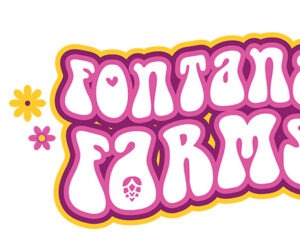Piney River Brewing Co.
Dear Replicator, of all the unusual ingredients I’ve seen in craft beers over the years, I believe the black walnut dark wheat ale I encountered over in the Ozarks may have been a first. I would love to know how Piney River Brewing Co. created their Black Walnut beer!
Graham Curtiss
Dallas, Texas

In 2009, Joleen and Brian Durham were sitting by a bonfire in their backyard drinking Ommegang’s Three Philosophers. It was a period during which the farm brewery concept was experiencing a renaissance in which Ommegang (based in rural upstate New York) arguably played a part in kicking off, years earlier. According to Joleen, it was at this moment that they realized they were ready for a new stage of life.
“We wanted to make an investment in ourselves and in our community, and the one thing that Brian and I always did together was brewing beer,” says Joleen. At the time, the Durham’s kept some beef cattle on their farm in Bucyrus, Missouri, but upgrading to a brewery was a significant leap in scale and effort. “In 2010 we started renovating a 1940s-era barn on our farm — shoveling out decades-old manure, throwing old hay out of the loft. We also drilled a new, deeper well because we only had an old, hand-dug well on our farm.”
Eventually, the first level of the BARn (as the Durham’s call it today) was where they started brewing and canning, while the loft seemed an ideal area for a spacious taproom overlooking the property.
Ever since then, the rural location of the brewery has continued to play a significant role in the Durham’s efforts, frequently inspiring the sorts of beer they brew.
“There are lots of times when we’re outside in the Ozarks and working on our farm that we are inspired to brew a style of beer based on a specific thing the Ozarks are known for,” says Joleen. “Our Float Trip Ale is inspired by float trips on the many spring-fed streams in the Ozarks. This summer we have a German-style Pilsner coming out called Makin’ Hay, which we hope is an extremely crushable lager like you would want to drink after a long day or during a break while making hay on the farm — a hard, hot, humid job in the Ozarks.”
The eastern American black walnut tree is found throughout areas with warmer climates in the Mid-Atlantic, Southeast, and Midwestern regions of the United States. Black walnuts typically fruit from September to October. The husk, usually 1.5–2.5 inches (3–7 cm) across, is green and rounded, covering a hard, bony, dark brown or black nut. The kernel is oily, sweet, and most important of all, edible. Black walnuts are earthy, slightly bitter and astringent, and are described as having a bold, nutty aroma and flavor.
“We first brewed our Black Walnut ale for a beer fest in the fall of 2011,” says Brian. “Joleen wanted to brew a beer that featured black walnuts. The Ozarks are known for having an abundance of black walnut trees, and the nut grows wild and is hand harvested. She grew up harvesting black walnuts to eat and to sell to make a little folding money as a kid.”
The earthy, nutty character of the walnuts seemed an ideal fit for some kind of darker, maltier beer, according to the Durhams. Brian made the decision to use a wheat base for the beer to allow the flavor and aroma of the nut to shine.
“We use dark malts that add more color than flavor in our dark wheat beers,” says Brian. “Our favorite thing about dark wheat beers is that they can be really approachable and drinkable for people that say or think they don’t typically like to drink dark beers. Dark wheat beers can drink a lot lighter than they appear.”
The primary concern when brewing with any kind of nut is the oils, which can ruin a beer’s head retention when added following primary fermentation. Nuts are high in unsaturated oils, which are metabolized by yeast, and can actually benefit the yeast during the initial phases of fermentation. (It’s for this same reason that some brewers have experimented with adding olive oil to yeast starters in place of aeration.) When adding the nuts to the mash, as Piney River does, the oils should have no noticeable impact on head retention.
Still, many homebrewers are accustomed to adding such flavor-enhancing ingredients late in the process, during conditioning, where the strongest possible flavor can be extracted. For those who wish to continue experimenting with black walnuts — or any other kind of nut — there is one technique that should remove enough of the oils to enable a post-fermentation addition. Roasting the nuts (removed from their shells) at 250–300 °F (120–150 °C) helps to unlock their flavor, and afterwards, the nuts can be kept in paper bags overnight, which will soak up oil. Keep in mind: The more contact with the paper bags, the more oil will be soaked up, so try not to overstuff the bags. The next day, the nuts should be wiped down prior to adding to a secondary fermenter to further remove any excess oils. While there is still some risk of an impact to the beer’s head retention, this method can enable a brewer to punch up the flavor for bigger, stronger beers.
“Interestingly enough, in the Black Walnut ale, the walnut almost takes on a fruity flavor,” says Joleen. “The astringency disappears and the beer is very easy drinking with a unique flavor.”
Piney River Brewing Co.’s Black Walnut clone

(5 gallons/19 L, all-grain)
OG = 1.045 FG = 1.011
IBU = 15 SRM = 18 ABV = 5%
Ingredients
6.2 lbs. (2.8 kg) white wheat malt
3.5 lbs. (1.5 kg) Munich malt
8.8 oz. (250 g) crystal malt (60 °L)
3.2 oz. (71 g) Carafa® Special III malt
3.5 lbs. (1.6 kg) black walnuts
3 AAU Hallertau hops (60 min.) (0.75 oz./22 g at 4% alpha acids)
Wyeast 1056 (American Ale), White Labs WLP001 (California Ale), or SafAle US-05 yeast
3⁄4 cup corn sugar (if priming)
Step by Step
If possible, use fresh cracked black walnuts for best results, though subbing in store-bought walnuts is another option. If using fresh walnuts, discard shells and collect 3.5 pounds (1.6 kg) of nuts. Bake the walnuts around 250–300 °F (120–150 °C) until lightly tanned. Use a paper towel to wipe away any excess oils.
Mash all the grains and walnuts in with 2.75 gallons (10.4 L) of 165 °F (74 °C) strike water to achieve a rest temperature of 152 °F (68 °C). Hold at this temperature for 60 minutes.
Sparge with water at 170 °F (77 °C) to collect about 6 gallons (23 L) of wort. At start of boil, add the hops and boil for 60 minutes.
Chill wort to slightly below fermentation temperature, around 66 °F (19 °C). Aerate wort if using a liquid yeast and then pitch yeast. Ferment around 68 °F (20 °C) for one week, then allow a week for settling. Keg and force carbonate or bottle and prime as usual.
Piney River Brewing Co.’s Black Walnut clone
(5 gallons/19 L, extract with grains)
OG = 1.045 FG = 1.011
IBU = 15 SRM = 18 ABV = 5%
Ingredients
4 lbs. (1.8 kg) wheat liquid malt extract
2 lbs. (0.9 kg) Munich dried malt extract
8.8 oz. (250 g) crystal malt (60 °L)
3.2 oz. (71 g) Carafa® Special III malt
3.5 lbs. (1.6 kg) black walnuts
3 AAU Hallertau hops (60 min.) (0.75 oz./22 g at 4% alpha acids)”
Wyeast 1056 (American Ale), White Labs WLP001 (California Ale), or SafAle US-05 yeast
3⁄4 cup corn sugar (if priming)
Step by Step
If possible, use fresh cracked black walnuts for best results, though subbing in store-bought walnuts is another option. If using fresh walnuts, discard shells and collect 3.5 pounds (1.6 kg) of nuts. Bake the walnuts around 250–300 °F (120–150 °C) until lightly tanned. Use a paper towel to wipe away any excess oils.
Steep the specialty malts along with the nuts in a muslin bag in 2 gallons (8 L) of water at 152 °F (68 °C) for 15 minutes.
Remove the grain bag, place it in a colander, and wash with 1 gallon (4 L) of warm or hot water. Then add water to reach a total volume of 6 gallons (23 L). Bring liquid to a boil, then turn off heat and carefully stir in the liquid malt extract to dissolve completely. Return to a boil and add hops, then boil for 60 minutes.
Chill wort to slightly below fermentation temperature, around 66 °F (19 °C). Aerate wort if using a liquid yeast and then pitch yeast. Ferment around 68 °F (20 °C) for one week, then allow a week for settling. Keg and force carbonate or bottle and prime as usual.



